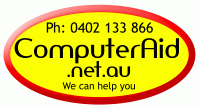| Simple ways to speed up your PC Posted: 08 Aug 2010 11:54 PM PDT I often get asked about how to speed up a PC. So I’ve put together some simple tasks that just about anyone can do. Note: these tips relate to Windows XP, but many can also be applied to Vista and W7. - Remove virus / spyware. This is often the biggest cause of a PC slowing down… and often you might not realise that you are infected). If you currently have an antivirus/antispyware program, then you can try some additional programs like SuperAntiSpyware and Malwarebytes, since they don’t interfere with existing security suites. As a last resort, you can remove your existing security suite, and install Microsoft Security Essentials (MSE). Just remember: before you scan: make sure your security software has actually updated its virus definitions over the internet. Double check that the date of the definitions is no more than 3 days old. I have seen some infections block security updates, yet fool the Security suite into thinking that everything is OK!
- Remove unneeded software. Go to Control panel, and start “Add or remove programs” (in Vista and W7 its called “Program and Features”… one of the most annoying changes that Microsoft have made to the new Windows). Now look through the programs listed, and CAREFULLY remove the ones that you are sure you don’t need any more. A good example of programs that can slow down your PC are: itunes, limeware, skype
- An advanced technique: remove KB folders and KB log files from the Windows folder (these are normally hidden, but from Windows explorer, go tools -> folder options -> view -> and make sure no files are hidden… you can change these settings back later. Now you can remove any log file that starts with “KB”, and any folder that starts with “$NtUninstallKB”
- remove temp files. These files are often hidden, so using something like CCleaner or EmpTemp2, is very useful. Otherwise you can do it manually by removing anything below c:\windows\temp and c:\documents and settings\{username}\Local Settings\Temp . Note: Some files will be “undeletable”… this is normal, just skip the undeletable files.
- clear ie cache & remove toolbars. If you are using Internet Explorer, then tools -> internet options -> browsing history -> delete… you can also make sure you tick “delete browsing history on exit”
- Run a disk defrag (If you don’t quite know how to do it, you can also try downloading and installing a more advanced defragmenting program like My Defrag)
- Another advanced technique: disable some unnecessary services. control panel -> Administrative tools -> Services. Safe ones to disable are: Error reporting service, fast user switching, remote registry, secondary logon, ssdp discovery service, webclient.
- You can also add more RAM (just be aware that this will not work if your system already has sufficient RAM)
- Hire a competent technician to tune your PC.
- If all the above fails, and as an absolute last resort, you can always wipe your computer and re-install Windows from scratch (or try linux)… if your PC is more than about 4 years old, then you should start to consider buying new PC!
Related posts: - MS antispyware 2009 removal
- 5 Steps To Speed Up Your PC
- Best Ways To Handle Recurring EXE Errors
 |




0 comments:
Post a Comment